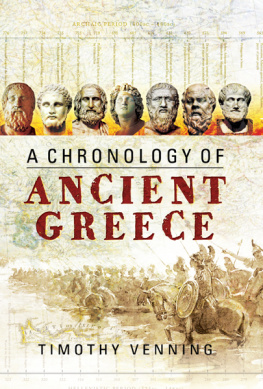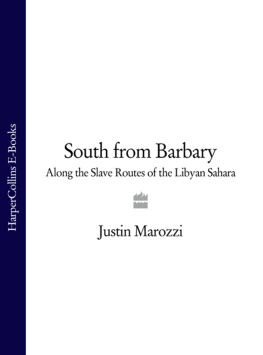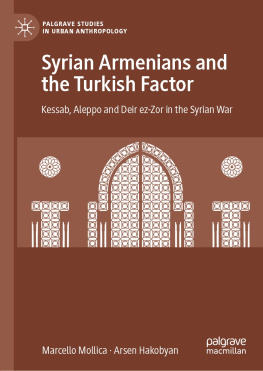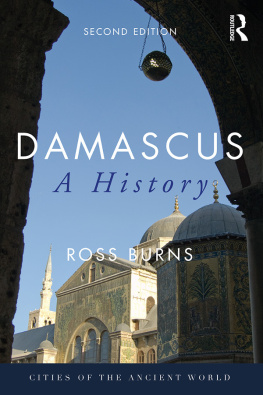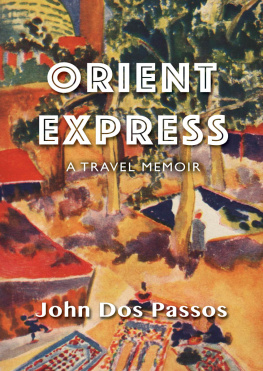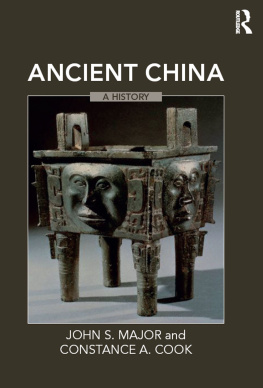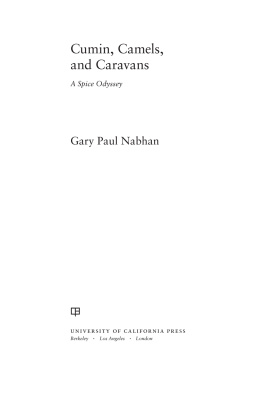THE SYRIAN DESERT
This historical survey written by a scholar and traveller gives the reader a well informed and readable account of an area of the world which has held and still holds a most significant geographical location in the Middle East - both culturally and commercially. Topics covered include - the bedouin trouble in the area, their origins and organization, ancient and medieval trade, early travelers, accounts of the important Altar of Damascus, Aleppo, Baghdad, Al Wasera, the caravan, state, the hajj, and much more
First published in 2003 by
Kegan Paul International
This edition first published in 2010 by
Routledge
2 Park Square, Milton Park, Abingdon, Oxon, OX14 4RN
Simultaneously published in the USA and Canada
by Routledge
270 Madison Avenue, New York, NY 10016
Routledge is an imprint of the Taylor & Francis Group, an informa business
Kegan Paul, 2003
All rights reserved. No part of this book may be reprinted or reproduced or utilised in any form or by any electronic, mechanical, or other means, now known or hereafter invented, including photocopying and recording, or in any information storage or retrieval system, without permission in writing
from the publishers.
British Library Cataloguing in Publication Data
A catalogue record for this book is available from the British Library
ISBN 10: 0-7103-0845-0 (hbk)
ISBN 13: 978-0-7103-0845-0 (hbk)
Publishers Note
The publisher has gone to great lengths to ensure the quality of this reprint but points out that some imperfections in the original copies may be apparent. The publisher has made every effort to contact original copyright holders and would welcome correspondence from those they have been unable to trace.
British Museum
ACKNOWLEDGMENTS
T HE writer of any outline such as the following must obviously and inevitably be indebted to a great many people. The nature of this indebtedness is indicated below, but its full extent can only be realized by the author.
My first and most heartfelt thanks are due to Professor Eileen Power of the London School of Economics and Political Science. She has been the good and guiding genius of this book from the first to the last page. Although herself busy with innumerable things, Miss Power has never been too rushed to read typescript, suggest improvements in the text, and give much-needed advice and help in the matter of publication.
No less sincere is my gratitude to Mr Douglas Carruthers, who, out of his far greater knowledge of the subject in general and his own desert experiences in particular, has read and amended for me a number of sections of the text. Mr Carruthers has also, with great kindness, advised in the important matter of maps and photographs.
During four years spent in the Near East, I was assisted in my researches by a number of kindly and interested people. Sir Harold Satow, then H.B.M.s Consul-General at Beyrout, enabled me to obtain a great deal of information relating to communications, both past and present, between Syria and Irak. President Bayard Dodge of the American University of Beyrout aided me in a variety of ways, as did Professor J. S. Crawford and Professor Assad Rustum of the same University. In the field of archaeology, I was privileged to have a most illuminating interview with the Reverend Father Antoine Poidebard of the University of St. Joseph, Beyrout; as also with Monsieur Daniel Schlumberger of the Service des Antiquits. The former was then engaged upon making aerial surveys of the Northern Syrian Desert, and the latter was excavating in Palmyra. Mr Norman Nairn was of the greatest assistance in helping me to collect material for the section on motor transport; and in addition to giving me a good deal of personal and private information concerning the Nairn Transport Company, he also introduced me to a number of other helpful people in Beyrout, Damascus and Baghdad, includingin particularMr Francis A. Kettaneh of the Eastern Transport Company. While in Egypt, two of the late King Fuads Ministers, namely, H. E. Hassan Anis Pasha (then Controller of Civil Aviation) and H. E. Ahmed Mohammed Hassanein Bey (then First Chamberlain), gave me some interesting sidelights on personalities, and on some of the practical aspects of desert exploration. From Hajji Selim Sawwaf of Damascus a good deal of information was obtained for the chapter on the Great Hajj caravans. Last, but in nowise least, were numerous officers of the Royal Air Force stations at Amman, Baghdad and Heliopolis, and various pilots of Imperial Airways Limited, all of whom contributed odds and ends of relevant information.
In London was done the greater part of the historical searching for this study. It would be difficult for me to acknowledge adequately the extent of my indebtedness to the Staffs of the British Museum, the Royal Geographical Society and the London Institute of Historical Research. Every member of these institutions whom I had occasion to consult was kindness and consideration personified. I owe most especial thanks to Mr A. I. Ellis, Deputy Keeper and Superintendent of the Reading Room of the British Museum; Mr Sidney Smith, Keeper of the Department of Egyptian and Assyrian Antiquities; Mr E. W. OF. Lynam, Assistant Keeper of the Department of Printed Books, Maps, Charts and Plans; Mr A. S. Fulton, Assistant Keeper of the Department of Oriental Printed Books and Manuscripts; Professor Albert F. Pollard and Mr Guy Parsloe of the Institute of Historical Research; and Mr W. D. Woodrow of the Royal Geographical Society. I am also obliged to the Librarians of the India Office and the Record Office for their assistance during my occasional use of the manuscripts in these archives.
Finally, there are a few individuals each one of whom granted me a single interview: namely, Sir Arnold Wilson, the late Colonel T. E. Lawrence, Major C. G. Lynam, Mr R. V. Vernon of the Colonial Office, Professor H. A. R. Gibb of the School of Oriental Studies (University of London), Professor W. L. Westermann of Columbia University (in New York), Professor W. R. Taylor of the University of Toronto and Professor Arnold Toynbee of the Royal Institute of International Affairs, London. Their helpfulness, one and all, can most emphatically not be gauged by the length of my conversations with each of the above-named gentlemen.
There is, of course, one patient individual who has counselled and advised, read and re-read, corrected and amended manuscript and typescript; one who, in addition to all these labours, has also prepared the data for the two principal maps. Namely, Mr Alan Fraser Grant. For the painstaking effort of the ultimate proofreading, I am indebted also to the timely assistance of Miss Mary Grant and Mr John Cook.


